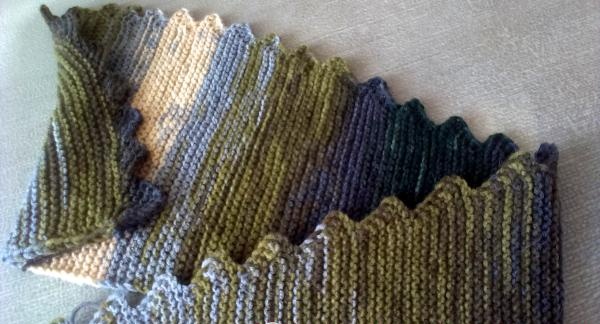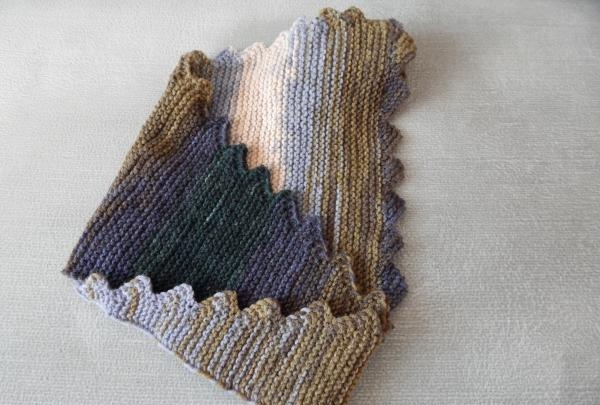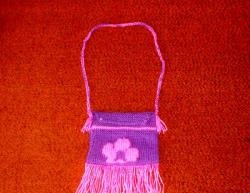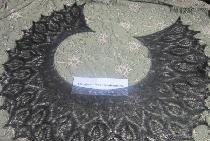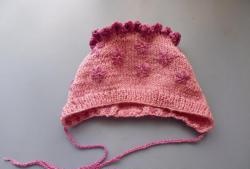
The scarf can have different sizes, it depends on the figure of the person who is going to wear it. But it must be elongated, which prevents it from turning into a shawl. This model of bactus has a width at the top of 35 cm, a length of 1 m. To knit the model of scarf shown in the photo, you will need approximately 100 grams of yarn of a suitable composition (in this case, a mixed yarn was chosen, consisting of half wool and acrylic), long knitting needles of the recommended number (in this case No. 4), marker and row counter.
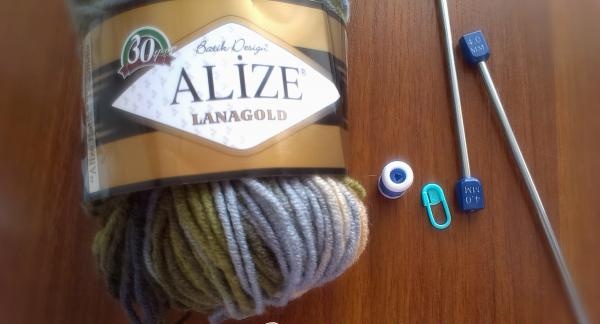
In a convenient way we cast on 3 loops.
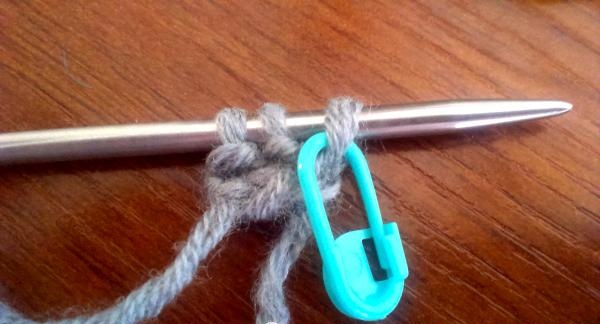
From the first to the last row we work in garter stitch. This means that all the loops, with the exception of the edge loops, are made with knit or purl stitches - as you wish. The drawing in both cases will be identical. In each even row, loops are added.It is performed on one side of the bactus, which should be marked with a marker for convenience. In order to avoid an unnecessary hole from the last loop (before the edge stitch), we knit 2 loops: one behind the front wall, then, without removing the loop from the left knitting needle, another knit one from it behind the back wall.


We knit the first 10 rows in this way. By this point, there should be 8 loops on the knitting needle (including edge stitches).

Then we begin to perform a zigzag along the side of the bactus in which the loops are added. To do this, in the 11th row, the first loop is removed without knitting, the second is knitted and then broaching is performed: the right loop is thrown over the left one and returns to the left knitting needle, becoming an edge loop.



So you need to close 3 loops. As a result, in the 11th row there will be 5 loops left on the knitting needle (with edge stitches).
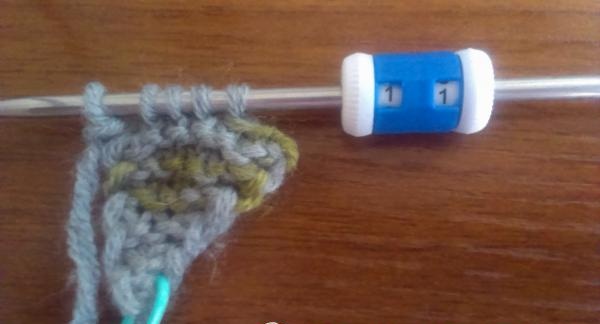
Next, the technology is repeated from rows 2 to 10. In the 6th row, 1 loop is added again. Next, odd rows are knitted without increasing, even rows with increasing. In this way, another 10 rows are performed and by the 21st row there are 10 loops on the knitting needles (with edge stitches). In the 22nd row we again begin to knit the clove using the previously described technology.
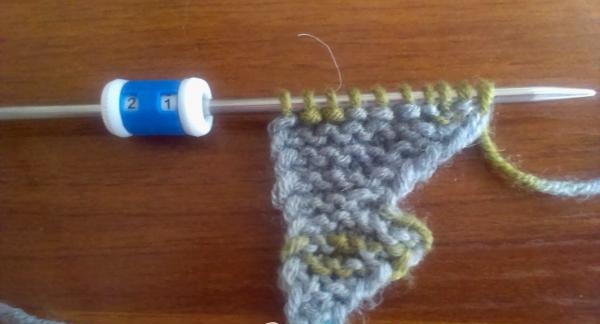
We repeat the technology of knitting the cloves until the end of the first, long side of the bactus leg. We knit in increments until the maximum width of the bactus reaches 30 cm and the length is 1 m. Having completed the next zigzag, we begin to form the second side of the leg of this triangle. To do this, we first form the top of the triangle using the partial knitting method.
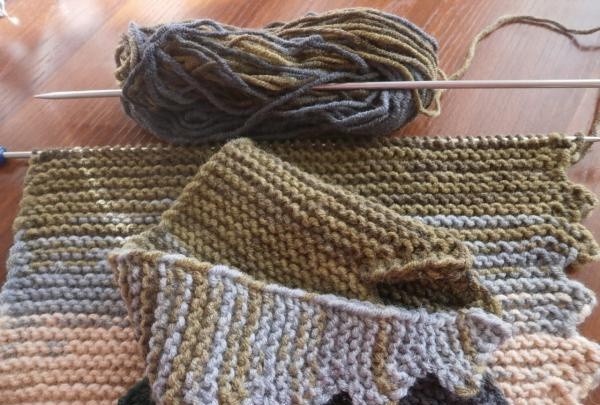

1st, 2nd row: remove the edge stitch, knit the next 2 loops and turn the work, leaving the remaining loops on the left knitting needle unknitted. We knit 3 loops back, and knit the edge loop.Rows 3, 4: remove the edge, knit 3 loops, turn and knit back as in row 2. And so in each subsequent odd row we add 1 knitted loop. When the number of knitted loops reaches 5, we begin to close them as we did when knitting the cloves. We close 5 loops, knit the next 2 loops from the left knitting needle and again begin to work with the partial knitting technology. And so on until the end of the second side of the leg. We close the last loops, steam the finished product and the bactus is ready.
